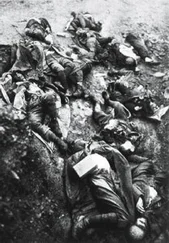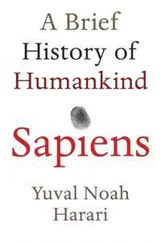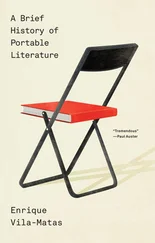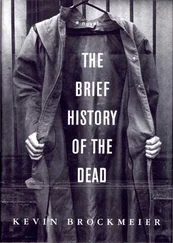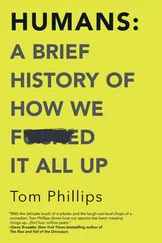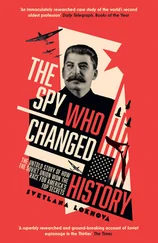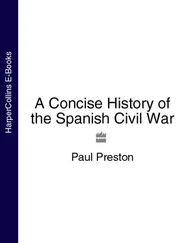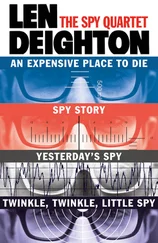Paul Simpson - A Brief History of the Spy
Здесь есть возможность читать онлайн «Paul Simpson - A Brief History of the Spy» весь текст электронной книги совершенно бесплатно (целиком полную версию без сокращений). В некоторых случаях можно слушать аудио, скачать через торрент в формате fb2 и присутствует краткое содержание. Город: London, Год выпуска: 2013, ISBN: 2013, Издательство: Constable & Robinson, Жанр: Прочая документальная литература, на английском языке. Описание произведения, (предисловие) а так же отзывы посетителей доступны на портале библиотеки ЛибКат.
- Название:A Brief History of the Spy
- Автор:
- Издательство:Constable & Robinson
- Жанр:
- Год:2013
- Город:London
- ISBN:9781780338910
- Рейтинг книги:3 / 5. Голосов: 1
-
Избранное:Добавить в избранное
- Отзывы:
-
Ваша оценка:
- 60
- 1
- 2
- 3
- 4
- 5
A Brief History of the Spy: краткое содержание, описание и аннотация
Предлагаем к чтению аннотацию, описание, краткое содержание или предисловие (зависит от того, что написал сам автор книги «A Brief History of the Spy»). Если вы не нашли необходимую информацию о книге — напишите в комментариях, мы постараемся отыскать её.
A Brief History of the Spy — читать онлайн бесплатно полную книгу (весь текст) целиком
Ниже представлен текст книги, разбитый по страницам. Система сохранения места последней прочитанной страницы, позволяет с удобством читать онлайн бесплатно книгу «A Brief History of the Spy», без необходимости каждый раз заново искать на чём Вы остановились. Поставьте закладку, и сможете в любой момент перейти на страницу, на которой закончили чтение.
Интервал:
Закладка:
There was another Moscow Centre operation that began running before the Second World War, would continue through the war, and still be effective during the critical first few years of the Cold War. Hailed by the KGB as the ablest group of foreign agents it ever recruited, the quintet of spies became nicknamed ‘The Magnificent Five’. The spy ring comprising Kim Philby, Guy Burgess, Donald Maclean, Anthony Blunt and John Cairncross, provided invaluable information during the war and in its immediate aftermath.
Some agents are motivated by greed, others by ideology. The Magnificent Five were all recruited during the thirties when, as Anthony Blunt explained after his treachery was made public in 1979, ‘It seemed to me and many of my contemporaries that the Communist Party and Russia constituted the only firm bulwark against fascism, since the Western democracies were taking an uncertain and compromising attitude towards Germany.’ British Labour Party leader Ramsay MacDonald’s agreement to head a National Government in 1931 was seen as a sell-out by the Magnificent Five and the Russian model seemed the only way forward.
The prime mover initially was Guy Burgess, a flamboyant Old Etonian whose Communist leanings were inflamed further by the book Hitler over Europe? by Ernst Henri, which proselytized the use of cells containing five members ( Fünfergruppen , as they were named in Germany) to help foment anti-fascism. Henri was in fact OGPU agent Semyon Nikolayevich Rostovsky, who was a major recruiter for Moscow Centre, talent-spotting in Cambridge during the thirties. Burgess set out to create his own ‘light-blue ring of five’.
Around the same time, one of his friends, former Cambridge man Harold ‘Kim’ Philby was signing up for Soviet Intelligence. Philby graduated in 1933 with ‘the conviction that my life must be devoted to Communism’. He travelled in Europe, and in Vienna met and married Litzi Friedmann, who was a Comintern agent, and attracted the attention of the OGPU for his work on behalf of the party. He was recruited by Teodor Maly, and according to Philby, at that stage ‘given the job of penetrating British intelligence… it did not matter how long it took to do the job’. He was sent back to England in May 1934 with a new controller, Arnold Deutsch, code name Otto.
Deutsch was instructed to work with both Philby and Burgess, but when Philby unsuccessfully tried to join the civil service (he was passed over because his referees had doubts about his ‘sense of political injustice’), Deutsch ordered him to be patient. Philby therefore publicly claimed to have changed his political orientation, and started to become a member of the establishment, working for the liberal monthly Review of Reviews .
Burgess had been busy, gathering his ring of five. They included mathematician Anthony Blunt, and language scholar Donald Maclean, both of whom were Burgess’ lovers at different times. He also recruited another modern languages student, John Cairncross, into his Comintern cell.
When Burgess was formally recruited by Deutsch, the controller suggested that the idea of a group was perhaps not the best way forward. Burgess, though, maintained the links of friendship between the five men throughout the next few years — which would almost prove catastrophic for Kim Philby when he was tarred by association with Maclean and Burgess when they were forced to defect to Russia in 1951.
On Deutsch’s instructions, Maclean and Cairncross both broke off their contact with the Communist party, and applied to join the civil service. Burgess became personal assistant to MP Jack Macnamara; Maclean was accepted into the Foreign Office in October 1935, with Cairncross joining him there a year later. While the personable Maclean made friends and started to gain access to useful material, Cairncross was less successful, and eventually Deutsch suggested that he apply to work at the Treasury. Burgess became a popular producer for the British Broadcasting Corporation, making contacts across the spectrum — including MI6 deputy department head David Footman, who would recommend Burgess for a job in the secret service in 1938, working for MI6’s new Section D, broadcasting propaganda to Nazi Germany. Blunt remained in Cambridge, sourcing new recruits for the NKVD, including Leo Long, who would be an important asset during the Second World War.
Philby, meanwhile, was becoming involved in the sort of assignment more usually to be found in the contemporary thrillers of Helen MacInnes or Leslie Charteris than the more mundane copying of secrets and passing of information carried out by the other Cambridge Spies. The Spanish Civil War broke out in 1936, and early the next year, Philby was sent under journalistic cover to penetrate General Franco’s entourage and help organize his assassination. That particular mission was abandoned that summer in favour of gaining information about the other intelligence services operating in Spain. The following spring, Philby became a local hero when the car he was travelling in was hit by a shell and he was the sole survivor; the medal he received was pinned on by Franco himself!
The Magnificent Five, though, were shortly to find themselves without a controller. Following the great purges of the NKVD in 1937, both Maly, who had been working with Philby, and Deutsch were recalled to Moscow. Maly faced execution, while Deutsch survived into the war years before being executed by the SS as part of the anti-Nazi resistance in Vienna.
When war broke out, the Magnificent Five ensured that they were in prime positions to assist their Soviet paymasters. Cairncross became private secretary to Lord Hankey, the Chancellor of the Duchy of Lancaster, who chaired many secret committees and was even overseeing the intelligence services. This meant that Cairncross could pass across ‘literally tons of documents’, according to the NKVD, including warnings about Operation Barbarossa, and the findings of the Scientific Advisory and Maud Committees regarding the prospect of creating a weapon using Uranium-235 — making him one of the Soviet Union’s first atomic spies. When Hankey was sacked from the Government in 1942, Cairncross turned his attentions to Bletchley Park, home of the Engima codebreakers.
Burgess was already ensconced in MI6 at the outbreak of war, and he assisted Kim Philby’s smooth entry to the organization. Philby and Burgess would work together as instructors at a training school for the sabotage division Section IX (known as Section D, for ‘Destruction’) before that was folded into the new SOE. Burgess was let go while Philby remained with SOE until he moved across to Section V, the Counter-Intelligence section of MI6. (Moscow had other agents in SOE, including Donald Maclean’s schoolfriend James Klugmann.)
While at Section V, Philby was able to pass on information on pre-war MI6 agents operating against the Soviets from the Registry, and, by volunteering for night duty at service headquarters at 54 Broadway, near St James’ Park in central London, he could keep Moscow informed of all current developments. He liaised with MI5 when Section V moved into central London in 1943, and when a new Section IX was established in 1944, specifically to deal with the Soviet threat past and present, Moscow Centre insisted that he ‘must do everything, but everything, to ensure that [he] became head of Section IX’. Philby manoeuvred the main contender — a staunch anti-Communist — out of the running, and as his colleague Robert Cecil wrote, thereby ‘had ensured that the whole post-war effort to counter Communist espionage would become known in the Kremlin. The history of espionage records few, if any, comparable masterstrokes.’
Although Philby undoubtedly made the greatest contribution overall to Soviet intelligence, during the war it was Cairncross and Blunt who attracted the most plaudits from Moscow Centre. Blunt would eventually work himself into a nervous breakdown, and effectively become little more than a courier after the war. He was recruited into MI5 in the summer of 1940, and was soon in charge of surveillance of neutral embassies, as well as gaining surreptitious access to the various diplomatic bags of their couriers — which he would photograph and pass over to the Five’s new London contact, Anatoly Gorsky. He also ran Leo Long as a sub-agent, gaining material courtesy of Long’s access to ULTRA material from Bletchley Park as a member of MI14.
Читать дальшеИнтервал:
Закладка:
Похожие книги на «A Brief History of the Spy»
Представляем Вашему вниманию похожие книги на «A Brief History of the Spy» списком для выбора. Мы отобрали схожую по названию и смыслу литературу в надежде предоставить читателям больше вариантов отыскать новые, интересные, ещё непрочитанные произведения.
Обсуждение, отзывы о книге «A Brief History of the Spy» и просто собственные мнения читателей. Оставьте ваши комментарии, напишите, что Вы думаете о произведении, его смысле или главных героях. Укажите что конкретно понравилось, а что нет, и почему Вы так считаете.

